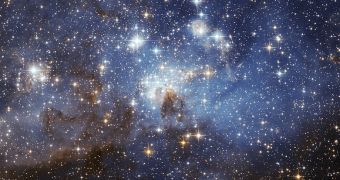After trying to do so for more than 50 years, scientists were finally able to calculate the Hoyle state, without which the existence of life would have most likely been impossible. The state applies to carbon, one of the chemicals elements that are indispensable to life.
In fact, without this state, it's highly unlikely that elements such as oxygen, iron and nitrogen would have developed also. It is basically an excited state of carbon-12 that allows for just the appropriate amount of the chemical to be created inside a star.
Its existence is particularly critical inside helium-burning red giant stars, where the nucleosynthesis of carbon would otherwise be impossible. The fact that this state may exist was proposed in the 1950 by expert Fred Hoyle.
He based his predictions on the fact that an abundance of heavy chemical elements was observed throughout the Universe. The scientist said that they wouldn't have developed if a state of the carbon-12 atom wouldn't have allowed for the triple-alpha process to produce them.
German physicists from the University of Bonn and Ruhr-Universitat Bochum, in collaboration with experts from the United States, were finally able to calculate this state, after half a century of trials.
“Attempts to calculate the Hoyle state have been unsuccessful since 1954. But now, we have done it!” explains professor Dr. Ulf-G. Meißner, who holds an appointment at the UB Helmholtz-Institut für Strahlen- und Kernphysik.
“For the Hoyle state this means that it must have exactly the amount of energy it has, or else, we would not exist. Now we can calculate whether – in a changed world with other parameters – the Hoyle state would indeed have a different energy when comparing the mass of three helium nuclei,” he adds.
The main implication of such a study would be that the anthropic principle – which state that the Universe is conducive to (primed to develop) life – is true. The creation of heavy nuclei (from carbon onward) is possible only inside the interior of large stars.
One of the reasons why the Hoyle state remained a mystery until now is that fact that it occurs at the same time as other states of carbon do. “This is as if you wanted to analyze a radio signal whose main transmitter and several slave transmitters are interfering with each other,” says Dr. Evgeny Epelbaum.
The expert holds an appointment as a professor at the RUB Institute of Theoretical Physics II, Daily Galaxy reports.
“Now we can analyze this exciting and essential form of the carbon nucleus in every detail. We will determine how big it is, and what its structure is. And it also means that we can now take a very close look at the entire chain of how elements are formed,” professor Meißner concludes.

 14 DAY TRIAL //
14 DAY TRIAL //